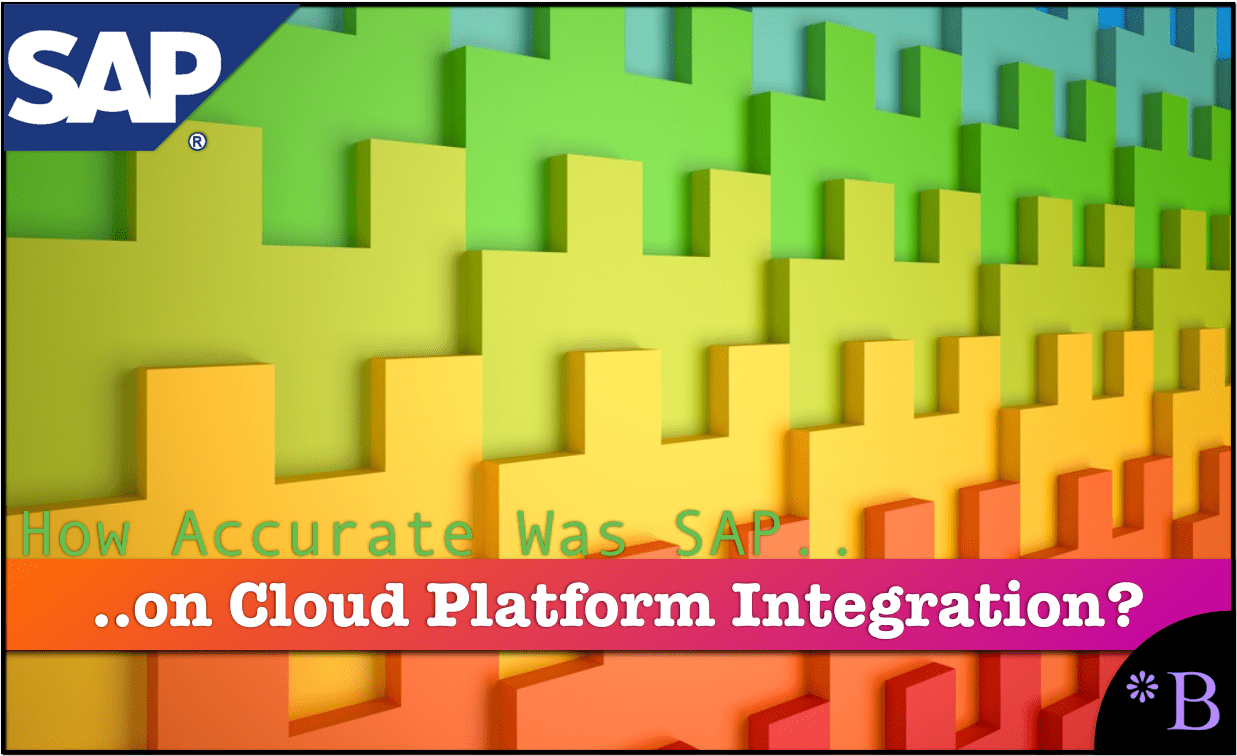How Accurate is SAP on SAP HANA Cloud Integration?
Executive Summary
- SAP has made strange statements around HANA Cloud Integration.
- We cover the accuracy of SAP’s proposals around the HCI.

Video Introduction: How Accurate is SAP on SAP HANA Cloud Integration?
Text Introduction (Skip if You Watched the Video)
SAP often presents the benefits of SAP HANA Cloud integration. SAP makes claims for integration being “out of the box” for its SAP Cloud Platform, and they claim, without evidence that their cloud platform reduces integration costs. Even though SAP has the highest integration problems of any major software vendor, SAP presents their cloud platform as providing nearly magical integration qualities. You will learn about SAP’s media output on SAP HANA Cloud integration to observe its inaccuracy.
Our References for This Article
If you want to see our references for this article and other related Brightwork articles, see this link.
Notice of Lack of Financial Bias: We have no financial ties to SAP or any other entity mentioned in this article.
Connect and Integrate with SAP HANA Cloud Integration
“Easily exchange data in real-time with SAP Cloud Platform Integration. Integrate processes and data between cloud apps, 3rd party applications and on-premises solutions with this open, flexible, on-demand integration system running as a core service on SAP Cloud Platform.”
How is this accomplished?
Also, why is this better than using another integration application? SAP has been guilty of making several exaggerated claims about its “platforms” that end up not being easier to use than competing offerings.
Any application interface can be made in real time. But in many cases, it makes more sense for it to be in batches. Why is SAP, including “real-time” in this description when it is well known that any interface can be made in real time?
What does..
“on-demand integration”
..mean?
Any integration harness or application is on-demand for the people that use it. What does it mean that it runs as a core service as part of the SAP Cloud Platform? Isn’t it part of the SAP Cloud Platform anyway? Also is it really a platform or just an area where integration development can be performed.
SAP goes on to say the following:
Key benefits include:
“Access a deep catalog of integration flows.
Integrate both processes and data through unified technology engineered for the cloud.
Get an integration service that is secure, reliable and delivered and managed by SAP in SAP’s secure data centers across the globe.
Lower TCO with an affordable, pay-as-you-go subscription model and minimal up-front”
Does SAP have any independent studies that can demonstrate that the SAP HANA Cloud Platform lowers TCO, or is this just a sales statement that has nothing to back it up?
SAP Cloud Platform Smart Data Integration?
“With SAP Cloud Platform Smart Data Integration, you can replicate, virtualize and transform data from multiple sources and store it in your SAP HANA instance on SAP Cloud Platform. Smart data integration offers pre-built adapters to common data sources plus an adapter SDK that lets you get data from any source for a 360-degree view of your business. Thanks to a cloud-first architecture your data is securely transferred from on-premises applications to the cloud without putting your business at risk.”
Most SAP customers don’t have HANA. If the customer does not want HANA? Can they use the SAP HANA Cloud Platform to store in Oracle, MongoDB, PostgreSQL, Tibero, or another non-SAP database?
What is a cloud-first architecture? Are many customers using the SAP HANA Cloud Platform to do the things listed by SAP?
Build Integration Solutions with SAP Cloud Platform Integration?
“SAP Cloud Platform Integration is making process integration simple and reliable.
It is SAP’s strategic integration platform for SAP Cloud Customers and provides out-of-the-box connectivity across cloud and on-premise solutions.”
SAP, outside of its acquired applications (SuccessFactors, Ariba, Concur, etc..), has very few cloud customers. The vast majority of SAP customers are using SAP software in an on-premises delivery mode.
When SAP uses the term “out of the box,” it is time to question this. Out of the box is a highly salesy term, which usually translates to “a lot of work is required.” This is particularly misleading as Bill McDermott has already stated the following about integrating SAP’s cloud acquisitions with its ERP system.
“With all those new products both homegrown and acquired, building native integration has been a challenge for SAP in the past seven years. If they want customers to sign on to the whole vision, with core ERP alongside SAP-owned cloud providers, integration is a key selling point. McDermott admits to the SAP Ariba main stage crowd that it hasn’t been easy.”
Conclusion
SAP names many things that can be done in SAP Cloud Platform, but this does not necessarily mean that customers should be using SAP Cloud Platform to do these things. Furthermore, the article does a poor job of describing what is happening on projects.
This article receives a Brightwork Accuracy Score of 3 out of 10, mostly for how much information it leaves out.